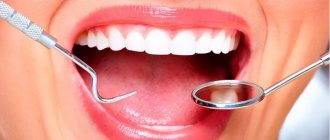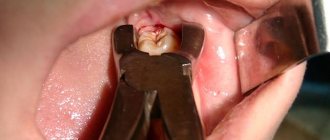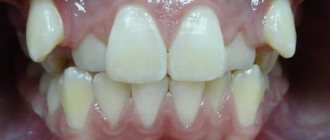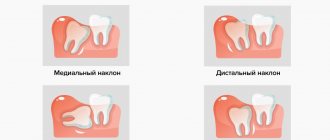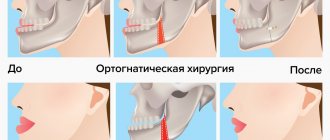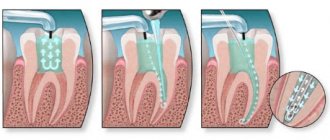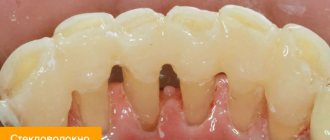Toothache is a problem that almost every person is familiar with. It signals existing pathologies of the dental system, but not all people immediately turn to dentists. This is due to patients’ fear of the painful sensations associated with visiting the dentist’s office. These fears are completely unfounded, since the anesthesia used in dentistry allows for high-quality anesthesia of the area in the oral cavity where manipulations will be performed.
How to treat teeth without pain?
Today, all therapeutic and surgical procedures performed by a dentist with the risk of causing pain to the patient are carried out exclusively after the use of painkillers. Dentists use different types of anesthesia, which means reducing the sensitivity of the injection site to any external influences. The administered medication prevents the “pain impulse” from entering the brain, so the person “feels nothing.” Anesthesia in dentistry is necessary so that the patient avoids unpleasant sensations when a specialist performs treatment. When the patient is not in pain, he can remain at rest for a long time. These are optimal conditions under which the dentist can perform manipulations more efficiently and effectively.
Medical Internet conferences
Choice of anesthesia during operations in the maxillofacial area Authors: Gordeev A.V., Shamshadinova A.R. Scientific supervisor: Doctor of Medical Sciences, Associate Professor Erokina N.L. GBOU VPO Saratov State Medical University named after. IN AND. Razumovsky Ministry of Health of the Russian Federation Department of Surgical Dentistry and Maxillofacial Surgery Painlessness of surgical interventions is one of the important conditions for performing an operation. Currently, when performing operations in the maxillofacial area, general, local and combined anesthesia is used. The choice of pain relief method is determined by many factors. The purpose of the work is to determine the range of use of various types of anesthesia during operations in the maxillofacial area performed in a hospital. We analyzed the medical histories of patients who were treated in the department of maxillofacial surgery of the Municipal Clinical Hospital No. 9 of Saratov in 2014, who underwent operations. In total, out of 688 patients who underwent surgical treatment in 2014, 436 (63%) operations were performed under local anesthesia, 220 (32%) under general anesthesia, and 32 (5%) operations under combined anesthesia. At the same time, of the number of operations performed under general anesthesia, half were osteosynthesis operations performed for fractures of the lower jaw, which is associated with the traumatic nature of this surgical intervention. Equally often, general anesthesia was used during necrosequestrectomy of the jaw (9%) and removal of polymorphic adenoma (9%). Less frequently, under general anesthesia, operations were performed to remove a foreign body from the maxillary sinus (5%), open phlegmon (4%), and others. Under combined anesthesia, operations to complete extraction and maxillary sinusotomy were performed equally often (37% each), less often - opening of phlegmon (25%). Under local anesthesia, the most frequently performed procedures were the opening of abscesses and phlegmons (26%), removal of impacted teeth (17%), removal of small benign tumors (15%), etc. Thus, most operations in the maxillofacial area were performed in a hospital setting, especially short-term ones , are performed under local anesthesia. Among the operations performed under general anesthesia, traumatic long-term interventions on the jaws predominate. Combined anesthesia is performed relatively rarely.
Types of pain relief
Dentists, as a rule, provide drug local anesthesia, which involves injecting the drug into the tissue in the treatment area. The effect of the product lasts for a certain time required by the specialist to perform the treatment procedure. After a short period of time, the drug is eliminated from the body, and tissue sensitivity is restored.
Treatment under general anesthesia is rarely performed. It is often used in complex jaw surgery operations.
Local anesthesia
Local anesthesia is almost always performed during dental treatment. It causes less stress to the body, so it is used even for children. A few years ago, only injections of Novocaine and Lidocaine were used. However, today different substances and their forms are used for pain relief.
- Application anesthesia
Anesthesia provides a superficial decrease in sensitivity. A special spray, gel or ointment is applied to the causative area of the oral cavity. A common substance is a solution of Lidocaine, produced in the form of an aerosol. This type of sensitivity reduction is indicated for manipulations with a minor degree of intervention, for example, when removing stone or preparing the dentition for prosthetics.
The concentrated drug penetrates the tissue by 2-3 mm and blocks nerve endings. The effect is noticeable within a few minutes and lasts half an hour to an hour. The anesthetic is not absorbed into the circulatory system, therefore the method is considered the safest. Other disadvantages of topical anesthesia include the insignificant depth of anesthesia and the short duration of its action.
- Infiltration anesthesia
Such anesthesia makes it possible to reduce the sensitivity of one element of the dentition or a small area of periodontal tissue. Such anesthesia is recommended for depulpation or when treating teeth severely damaged by caries.
The drug is injected into the root apex area. The substance does not allow the passage of a pain impulse in the area of the nerve branch. The method is recommended for the treatment of upper teeth, since the bone skeleton of the upper jaw is thinner and allows easy access to the nerves. The disadvantages of the method include the need to use a significant amount of anesthetic if it is necessary to anesthetize a large area. There is also a high risk of soft tissue deformation (swelling) at the injection site, which may interfere with the effective implementation of the procedure.
- Conduction anesthesia
This anesthesia is used to anesthetize several dental elements located in a row “in the neighborhood.” This method of reducing sensitivity is used during tooth extraction, puncture of inflammation, acute periodontitis and when installing a drainage system in a purulent focus. A properly selected anesthetic temporarily reduces the sensitivity of an entire nerve branch. The disadvantage of the technique is the high risk of injury to the nerve and vascular network. Manipulations require specialist skills.
- Intraligament method
When treating children's teeth, an intraligamentous method of pain relief is used. The substance is injected into the periodontal zone, near the alveoli and tooth root. With this method, the mucous membrane does not lose sensitivity, so the risk of the baby biting the mucous membrane and lips is reduced.
- Intraosseous anesthesia
This type of sensitivity reduction is indicated when tooth extraction is necessary. The substance is injected into the gum, reducing the sensitivity of the target tooth and gum area. Pain relief occurs very quickly, but the effect does not last long.
- Trunk anesthesia
With this type of anesthesia, the trigeminal nerve and its branches at the base of the skull are blocked. This radical method is used for extensive operations in dentistry and jaw surgery. The duration of anesthesia is increased due to the vasoconstrictor. Trunk anesthesia affects both jaws. The patient is constantly monitored.
When is pain relief not performed?
Before using this or that drug, the dentist finds out whether the patient has mental illnesses or allergic reactions. Drug pain relief is not used if:
- allergy;
- cardiac ailments;
- diabetes;
Important: Drug pain relief is administered to pregnant women and nursing mothers with extreme caution.
In some cases, when anesthesia is contraindicated, drugs are used in dentistry to relieve the patient of anxiety. Sedatives reduce fear, are not hypnotics, and give good results. They are prescribed by the dentist depending on the need.
What drugs are used in dentistry for pain relief?
Novocaine and Lidocaine have already been mentioned. In modern practice they are used less and less. Experts prefer modern anesthetics: Articaine, Ultracaine, Scandonest, Septonest.
Anesthesia drugs in dentistry are prepared in capsules, which are placed in the body of a syringe with a thin needle.
What complications can arise when using painkillers in dentistry?
Common side effects when using anesthesia include:
- allergic reactions due to individual intolerance to the drug;
- poisoning (when using an overdose);
- nerve injury from a needle (in case of violation of the local anesthesia protocol).
The following manifestations and conditions may also be observed after an injection:
- swelling and hematomas due to damage to the blood branch;
- infection of tissues at the site of drug administration due to the doctor’s violation of the rules of asepsis and antisepsis;
- trismus due to nerve damage;
- biting soft tissues due to loss of sensitivity after administration of the drug.
How to prepare for anesthesia?
It is recommended to refrain from drinking alcohol two to three days before the procedure, as ethyl alcohol reduces the effect of the drugs. If you're nervous about your upcoming dental visit, take a sedative at night. Dental treatment is not carried out against the background of colds.
General anesthesia
Anesthesia is a complete (temporary) loss of sensitivity in a patient, which is accompanied by impaired consciousness of varying degrees. This method of pain relief is rarely used in dentistry.
The indication for general anesthesia is one of the following conditions:
- intolerance to local anesthetic drugs;
- mental conditions and disorders;
- pathological fears of dental procedures.
Before visiting a dentist, if procedures are to be performed under local anesthesia, the patient is required to undergo a medical examination:
- ECG and consultation with a cardiologist;
- laboratory blood tests;
- consultation with a therapist.
Before visiting the dentist's office, you should avoid drinking alcohol. Eating on the eve of the visit and in the morning is contraindicated. General anesthesia is carried out only by an anesthesiologist in the presence of a resuscitator.
Anesthesia on the upper jaw
Infiltration anesthesia. Methodology
The needle is immersed into the soft tissue horizontally at an angle of 300 to the alveolar process.
The bevel of the needle should face the bone. The anesthetic is administered slowly. From the palatal stolon, a needle is inserted into the angle formed by the alveolar and palatal processes of the upper jaw, and no more than 0.5 ml of anesthetic is injected. From the lingual side of the alveolar part of the lower jaw, the anesthetic is injected into the place of transition of the mucous membrane of the alveolar part to the sublingual area, 2-3 ml. From the vestibular side, the needle is inserted into the transitional fold. Anesthesia zone: gums, alveolar process and tooth, in the area of which anesthesia is performed.
Onset time: 7-10 minutes.
Tuberal anesthesia. Methodology
The needle is placed at an angle of 450 to the crest of the alveolar process, with the needle beveled to the bone. With the patient's mouth half-open, the needle is inserted at the level of the crown of the 2nd molar into the mucous membrane, 0.5 cm outward from the transitional fold. The needle is advanced upward, backward and inward to a depth of 2.5 cm and 2 ml of anesthetic is injected.
Anesthesia zone: 1,2,3 molars, periosteum of the alveolar process and the mucous membrane in the area of these teeth on the vestibular side.
Onset time: 7-10 minutes.
Infraorbital anesthesia. Methodology
Anatomical landmarks of the infraorbital foramen:
- 0.5-0.75 cm below the bone groove corresponding to the junction of the zygomatic process of the upper jaw with the zygomatic bone;
- 0.5-0.75 cm below the point of intersection of the lower edge of the orbit with a vertical line drawn through the middle of the second molar;
- 0.5-0.75 cm below the intersection of the lower edge of the orbit with a vertical line drawn through the pupil of the eye looking forward.
Intraoral method. The needle is inserted 0.5 cm anterior to the transitional fold at the level of the gap, between the central and lateral incisor. The needle is advanced posteriorly, upward and outward. In the area of the infraorbital foramen, 0.5-1.0 ml of anesthetic is released.
Extraoral method. Moving 1.0 cm downward and inward from the projection of the hole on the skin, a needle is inserted. Move the needle upward, posteriorly and outward towards the infraorbital foramen. In the area of the infraorbital foramen, 0.5-1.0 ml of anesthetic is released.
Anesthesia zone: incisors, canines and premolars, bone tissue of the alveolar process, mucous membrane of the alveolar process on the vestibular side, skin of the infraorbital region, lower eyelid, wing of the nose, skin and mucous membrane of the upper lip.
Onset time: 3-5 minutes
Palatal anesthesia. Methodology
The palatal foramen is located at the intersection of a line drawn parallel to the border of the hard and soft palate through the middle of the crown of the 3rd molar from the gingival margin to the midline of the upper jaw, and a line drawn through the middle of the first and perpendicular to it.
The needle is inserted 1.0 cm anteriorly and medially from the projection of the palatine opening onto the mucous membrane. The needle is advanced upward, posteriorly and outward until it comes into contact with the bone and 0.5 ml of anesthetic is injected.
Anesthesia zone: the shell of the hard palate, the alveolar process on the palatal side in the area from the 3rd molar to the middle of the canine.
Onset time: 3-5 minutes.
Incisal anesthesia. Methodology
The needle is inserted between the central incisors, 7-8 mm posterior to the gingival margin (behind the gingival papilla). Advance the needle until it contacts the bone and inject 0.3-0.5 ml of anesthetic.
Anesthesia zone: mucous membrane and periosteum of the alveolar process on the palatal side and the hard palate from the middle of one canine to the middle of the other.
Onset time: 3-5 minutes.


